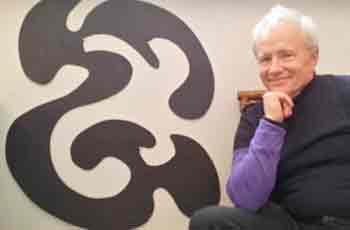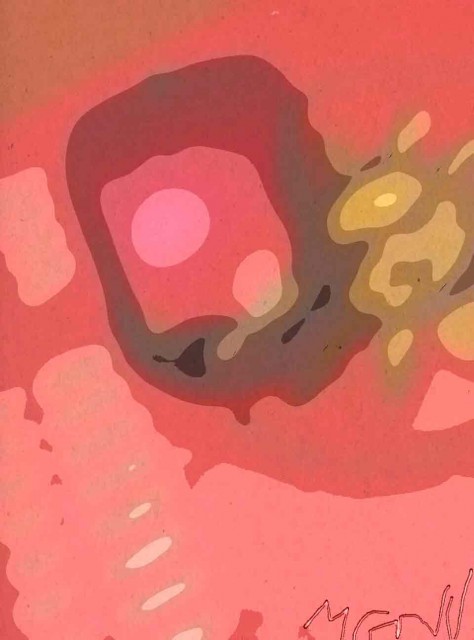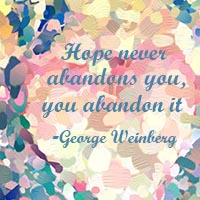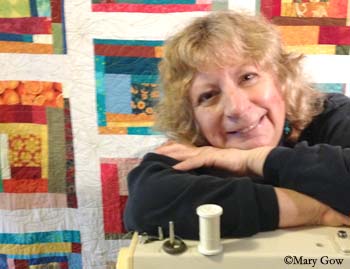
Joy-Lily, San Francisco-based Fiber/Surface Design Artist. Photo by Mary Gow
Joy Lily’s been around fabric and making clothes most of her life. Originally from Detroit, she’s the daughter of a dressmaker. “I was grounded a young child by a mild case of polio, so I made a lot of art early on.” At age 20 she began her career as a graphic artist and illustrator and for the next 16 years she designed ads, book covers, brochures and logos in New York City.
On a visit to her brother in southern California, she discovered batik (wax resist dyeing). She was captivated by this magical technique and even convinced a client to use it for a series of recipe illustrations.
She’s called Bernal Heights home since 1986, and here she’s pursued her passion as a fiber artist / surface designer. “I don’t weave or knit, but plain fabric is just not safe around me. I will dye it, paint or print on it and lately I’ve been chopping it up and sewing it back together. I’m making quilts from this ‘art cloth,’” says Lily.
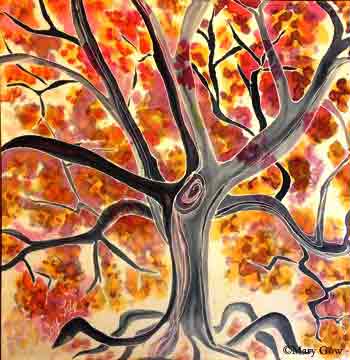
“Tree,” painting on silk by Joy-Lily. Photo by Mary Gow
The patterns and colors in nature inspire her, as well as her travels, and the accidental effects of the dyeing techniques batik and shibori (Japanese resist dyeing without wax also known as the grandmother of tie-dyeing and involves tying, stitching, clamping, or wrapping fabric).
“Shibori makes an artist out of everybody,” she said.
Lily’s written a book for quilters of all levels (including complete beginners), called Carefree Quilts. It features perfection-free quilting techniques and what Lily calls her “quirky quilt blocks.” Autographed copies are available directly from her.
Wednesday afternoons Lily instructs a quilting class in Bernal.
By special request she will teach a four-hour workshop on how to hand paint and dye your own silk scarf. The host gets complimentary tuition if she brings 8 people together to take the course.
You can see more of Lily’s work and enroll in classes at http://www.Joy-Lily.com or visit her studio by appointment.

